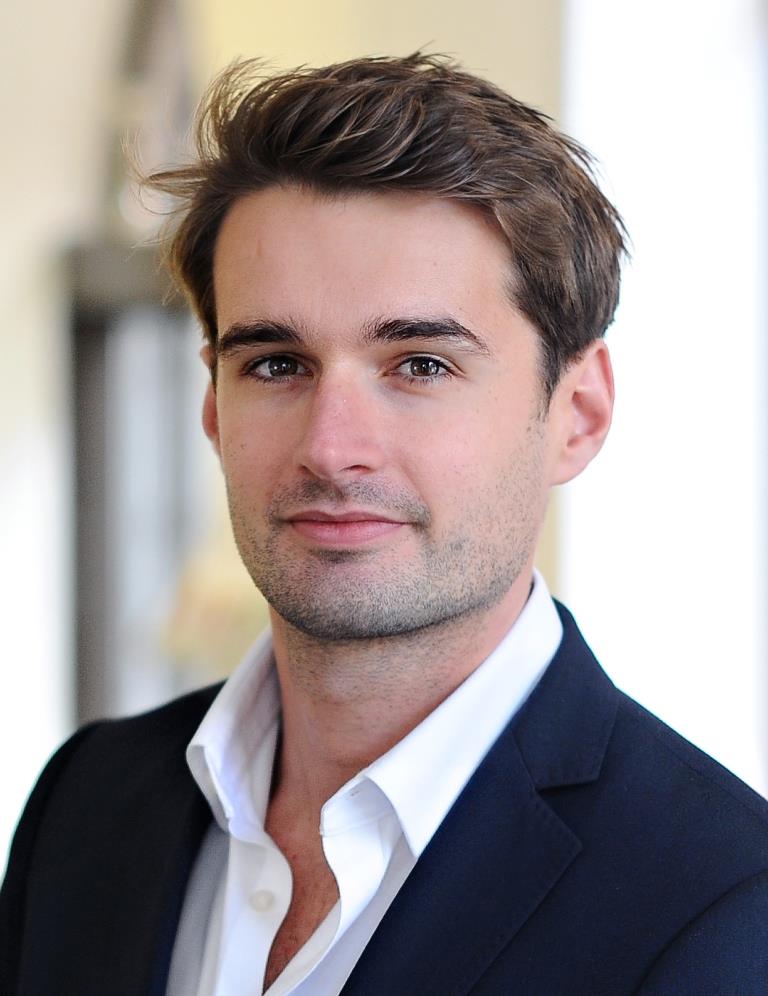We value your privacy
We use cookies to enhance your browsing experience, serve personalized ads or content, and analyze our traffic. By clicking "Accept All", you consent to our use of cookies.
We use cookies to help you navigate efficiently and perform certain functions. You will find detailed information about all cookies under each consent category below.
The cookies that are categorized as "Necessary" are stored on your browser as they are essential for enabling the basic functionalities of the site. ...
Necessary cookies are required to enable the basic features of this site, such as providing secure log-in or adjusting your consent preferences. These cookies do not store any personally identifiable data.
No cookies to display.
Functional cookies help perform certain functionalities like sharing the content of the website on social media platforms, collecting feedback, and other third-party features.
No cookies to display.
Analytical cookies are used to understand how visitors interact with the website. These cookies help provide information on metrics such as the number of visitors, bounce rate, traffic source, etc.
No cookies to display.
Performance cookies are used to understand and analyze the key performance indexes of the website which helps in delivering a better user experience for the visitors.
No cookies to display.
Advertisement cookies are used to provide visitors with customized advertisements based on the pages you visited previously and to analyze the effectiveness of the ad campaigns.
No cookies to display.
 Stephanie Kay
Managing Associate
Lewis Silkin LLP
London, UK
Stephanie Kay
Managing Associate
Lewis Silkin LLP
London, UK Alan Hunt
Partner
Lewis Silkin LLP
London, UK
Alan Hunt
Partner
Lewis Silkin LLP
London, UKWearable technology is any technology that is designed to be used while worn and includes smart watches, fitness trackers, wearable cameras, smart fabrics and e-textiles, and augmented and virtual reality headsets as well as implantable devices. These technologies are frequently networked, integrating electronics and computer technology, such as sensors to collect real time data. This is often sent to apps on the wearer’s smartphone to provide insights into their sleep, health and movement activities as part of a trend known as the “quantified self.”
In recent years wearable technology is expanding into the fashion, wellness and lifestyle sectors, as consumers demand devices that provide enhancement to the wearer. Augmented and virtual reality technology is also becoming more commonplace in choosing clothing products to reduce returns. In relation to digital healthcare, wearable and implantable technology is enhancing clinicians’ treatment and management of health conditions. Wearable technology, especially temperature adaptive clothing, also has the potential to promote sustainability. Embedding wearable technology into a product provides it with a dual purpose and can offer a unique selling point capable of distinguishing the product from its competitors. Wearable technologies allow their designers to create personalised and functional products, as well as providing an opportunity for brands to diversify and collaborate with technology companies, creating opportunities for licensing deals.
This article considers the growing significance of the wearable technology sector and provides a roadmap to the key intellectual property issues to consider for companies looking to enter the sector.
The modern wearable technology sector is growing at a rapid pace as technology becomes ever more embedded in our day-to-day life and activities. The first
example of wearable technology was the invention of spectacles in the 13th century, with other notable early healthcare inventions including the development of the first portable electric hearing aid in 1898.1 The watch industry has also been a forerunner in the wearable technologies sector. The first pocket mechanical watch was developed in the 16th Century,2 and the first calculator watches released in 1975.3 Smartwatches began to enter the marketplace in 1998, with the Apple Watch first launched in 2015. By 2019 the Apple Watch had achieved greater annual unit sales than the entire Swiss watch industry 4 —a strong indication of the accelerating growth of the wearable technology sector.
The combined wearable technology market is currently valued at $128.07 billion in 2023 and is forecast to more than double by 2030.5 Between 2020 and 2022 the use of internet-connected accessories such as smart-watches, fitness bands and connected clothes or shoes has increased from 17 percent to 26 percent amongst people aged 16 to 74 based in the EU.6 Similarly, in the UK there has been significant growth in the ownership or access to wearable technology, increasing from 2 percent of respondents in 2014 to 45 percent in 2023.7 These statistics demonstrate the value in this sector, the potential growth available and the opportunities this will provide for business.
The rate of growth in this sector can be explained by several factors, including rising incomes and increased levels of internet connectivity globally. Growth has also been driven by improvements in miniaturisation and battery technology, alongside social changes, including a focus on integrating technology into daily health or activity monitoring.
Much of the analysis of the wearable technology sector has focused on addressing privacy concerns in relation to the personal data generated and collected, how it is stored and processed, security vulnerabilities, and compliance with data privacy laws around the world.8
However, there are several intellectual property issues that licensing professionals should be attentive to when advising companies in the wearables industry.
Collaborations
The further expansion of the wearable technology sector into fashion has been driven by collaborations between fashion and technology companies. Luxury fashion and technology do not often collide, but fashion is now being seen as the gateway for wearable technology by expanding consumer acceptance and sentiment. For example, The Ray-Ban Meta Smart glasses, first launched in 2021, resulted from a partnership between Ray-Ban fashion brand’s parent company EssilorLuxottica and Meta to create smart sunglasses that include two cameras, speakers, a microphone and a touchpad integrated into their frame.9 This collaboration drew upon the branding and fashion design expertise of Ray-Ban and the technology and software expertise of Meta. The advantage that brands can leverage from these collaborations is enhanced and more sophisticated data that the devices store, allowing brands to create and target new products.
When entering into such collaborations, companies need to consider the structure of the arrangement, including the treatment of their existing intellectual property rights, what should happen to IP developed jointly during the collaboration, and the approach to exploitation of the rights. Collaborations in the wearable technology sector can be more complex for the parties—while both fashion and technology firms will often have extensive experience of joint ventures and collaborations, the underlying IP rights typically being licensed by fashion firms and technology firms. Technology firms can differ, as can the expectations in different industries on licensing terms and royalty provisions.
Dealing with Copycats
A significant issue for trailblazing wearable technology products is protecting against the risk of counterfeit and copycat products.10 Such products can cause infringement issues for the original creators, decrease their sales, and tarnish the brand value of the original products, causing a loss of value across the wearable technology sector. Currently, counterfeit smartwatches and fitness bands are the commonly available copycat products in the market in the wearable technology sector,11 but as further products enter the mainstream, it will be an issue faced by any brand or manufacturer in this space.
There are a range of strategies companies should take to protect their wearable technology, including considering registered or unregistered design protection to protect the appearance, shape, configuration, patterns and decoration of a product, trademarks to protect the brand name and (in some jurisdictions) the availability of copyright. Consideration should also be given to obtaining protection for inventive aspects of the products under patent law, or as trade secrets. By way of example, in 2014 adidas brought patent infringement litigation against Under Armour and its fitness tracking app MapMyFitness in the U.S. The litigation concerned adidas patents in relation to a location-aware fitness training device supporting real-time interactive communication and automated route generation,12 and was ultimately settled with adidas granting a license for Under Armour to use its patents subject to a non-disclosed license fee.13 More recently, Apple has faced a U.S. import ban on certain models of Apple Watches and been the defendant in an ongoing patent infringement and trade secrets claim in the U.S. by Masimo, who alleged that the Apple Watch violated Masimo’s light-based pulse-oximeter health monitoring patents.14 These examples highlight the importance of a robust IP protection strategy for businesses in the wearable technology sector.
Sustainability
Sustainability is a growing concern of wearable technology consumers. Wearables have the potential to have a negative effect on the environment through increased production of electronic components, electronic waste from the disposal of wearable devices, and increased energy usage.15 A particular concern is the growing volume of electronic waste, with 62 million metric tons of electronic waste generation worldwide in 2022.16 Sustainability issues are not just limited to electronic devices. While some running shoe manufacturers are working on developing more sustainable sneakers, including developing a shoe that can be recycled,17 adidas has received criticisms for the sustainability of their latest marathon running “super shoe,” which has been designed to last for only a single race.18 It seems likely that the era of the fashion industry self-regulating in relation to sustainability is drawing to a close around the world, with several jurisdictions adopting new sustainability rules that will have significant impacts on wearable technology companies, particularly in the fashion sector. For example, the EU is currently considering mandatory and harmonised extended producer responsibility rules for textiles, restricting the export of textile waste and providing incentives to producers to design products that are more sustainable, as well as globally.19 Wearable technology brands and manufacturers should remain attentive to these issues and revamp their business models to align with the changes ahead.
Intellectual property can play a significant role in driving sustainability initiatives. For example, the EU-funded Intellectual Property Rights for Sustainability and Circularity project aims to empowers inventors and businesses to navigate the complex intellectual property landscape for sustainable development.20 Similarly, the WIPO GREEN initiative seeks to leverage IP rights to contribute to achieving the UN Sustainable Development Goals through projects to fast-track the development and deployment of green technologies and a green tech online marketplace, connecting technology and service providers with those seeking environmentally-friendly, innovative solutions.21
The wearable tech sector is booming and will continue to grow over the coming years. It is providing doctors with greater opportunity to monitor patients, providing athletes greater support and advice to enhance their training and safety, and fashion designers the opportunity to collaborate with technology brands that have never normally graced the runway. It is an exciting, fast-moving, forward-thinking sector that is drawing together the use of technology to enhance our everyday activities within stylish products that can be worn and form part of our daily activities. As with the widespread adoption of any new technology, there may be challenges ahead for both brands and technology companies seeking to collaborate. Together with its legal advisors, such companies should make an early assessment of whether there is patentable technology, how the collected data will be managed, what other IP protection can be obtained across the relevant jurisdictions for the product itself, and how the product is marketed to consumers. Legal advisors must be astute to the growth and sector specific challenges, while acting nimbly to ensure their clients obtain appropriate protection before their competitors.